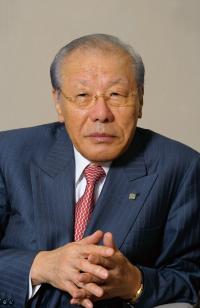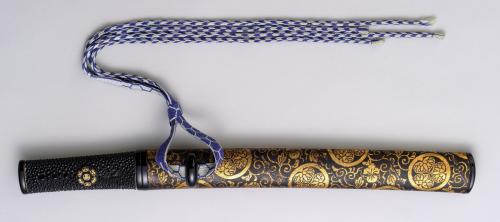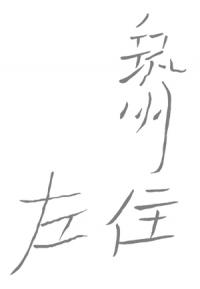
About the Komatsu Yasuhiro Collection
The Komatsu Yasuhiro Collection consists of fourteen Japanese swords: seven National Treasures, six Important Cultural Properties, and one designated as a Tokubetsu Jūyō Tōken, a classification for swords of superior quality and condition. These swords were collected by Mr. KOMATSU Yasuhiro, a recipient of Fukuyama City’s Distinguished Citizen Award and founder of FP Corporation, whose main office is located within the city. Following Yasuhiro’s last wishes, these swords were donated in November 2018 to Fukuyama City by his wife, Hiroko.
|
KOMATSU Yasuhiro |
Komatsu Yasuhiro and Japanese Swords My husband first encountered these swords in 2002, when a competitor in the food packaging industry filed for bankruptcy and FP Corporation became their sponsor. That competitor had possession of a Japanese sword fittings museum in Sugamo, Tokyo, which was included with the company’s assets.
Part of the reorganization plans for that company involved the liquidation of their assets. However, on a sentimental level my husband could not allow the liquidation of the seven National Treasures and six Important Cultural Properties that they held, and so he took ownership of the swords as his own assets. In 2007, he thought that they would serve well in the promotion of tourism of Fukuyama City, and so he donated them to the Fukuyama Museum of Art.
In 2017, Yasuhiro was entrusted with another sword, a Tokubetsu Jūyō Tōken (a special classification of Japanese swords) that had been passed down in the Abe clan, who had been rulers of the Fukuyama Domain. It was Yasuhiro’s wish that this and the other swords could be put to good use by being on display permanently at the Fukuyama Museum of Art, so to fulfill that wish I requested to make a donation, bringing the total of these swords to fourteen.
Before his passing, my husband wished to contribute in some way to the community since his company was started in Fukuyama. He worked to further the education and culture of the community by providing scholarships for high school students of Fukuyama and vocational school students within Hiroshima Prefecture. He also made donations to improve the facilities of Fukuyama City University.
Before his passing, my husband wished to give his collection of Japanese swords to the Fukuyama Museum of Art so that they may be useful to the city. I believe that my husband would be very happy and relieved to know that his collection has been safely entrusted to the Fukuyama Museum of Art as an asset of the city.
KOMATSU Hiroko |
These swords were entrusted to Fukuyama City by Mrs. Komatsu Hiroko following the wishes of her late husband, Mr. Komatsu Yasuhiro, a distinguished citizen of our city. The donation of his entire collection of Japanese swords, which are very valuable pieces even within Japan, show a deep understanding regarding the improvement and further development of our city’s cultural administration. I am very grateful to Mr. Komatsu Yasuhiro and his family for this generous donation, brought about by love for his hometown.
This collection will be displayed to the public at the Fukuyama Museum of Art as one of the city’s valuable assets. Special displays and publicity of these swords will link to the further promotion of tourism in the Bingo region as well as allow many people to experience the majesty of these pieces for themselves.
Furthermore, our city has programs for children to appreciate art, such as the “Welcome to the Museum of Art Project” aimed at ten-year-old children. These and other opportunities provide children with a chance to learn about excellent pieces of fine art and foster a love for their hometown. Through these efforts for our children, I believe that we will be able to fulfill Mr. Komatsu’s wishes for many, many years to come.
Fukuyama City Mayor
EDAHIRO Naoki
There are currently 2.5 million Japanese swords remaining throughout the country, but only 120 are designated as National Treasures. Of the museums in Japan that possess these National Treasures, the Tokyo National Museum holds the most at nineteen of these swords. However, with this donation, the Fukuyama Museum of Art will hold the second-most with seven swords designated as National Treasures.
Furthermore, contained within the fourteen pieces of the Komatsu Yasuhiro Collection are a tachi sword with a connection to the Tokugawa clan as well as a katana handed down in the Abe clan, which had lead the Fukuyama Domain. The excellent quality of this personal collection along with the historical significance to our city makes this collection of very high value—it could even be said that all of Japan should be proud of this valuable collection.
It was Mr. Komatsu’s wish that the people of Fukuyama could appreciate these excellent examples of Japanese swords and that sword enthusiasts all over Japan would come to Fukuyama. We at the Fukuyama Museum of Art are excited to introduce these fascinating Japanese swords to many people through the Komatsu Yasuhiro Collection.
Fukuyama Museum of Art
Director
HARADA Kazutoshi
小松安弘コレクション
 |
 |
Long Sword (Tachi) | Important Cultural Property
Inscription: Kunikiyo
Kamakura Period, 13th century
 |
Long Sword (Katana) | Important Cultural Property
Attributed to Rai Kunimitsu
Kamakura Period, 14th century
 |
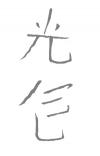 |
Dagger (Tantō) | Important Cultural Property
Inscription: Mitsukane
Kamakura period, 13th-14th century
 |
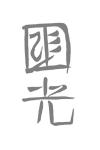 |
Dagger (Tantō) | National Treasure
Meibutsu, Known as “Aizu Shintōgo”
Inscription: Kunimitsu
Kamakura Period, 13th century
|
|
 |
Short Sword (Wakizashi)| Important Cultural Property
Meibutsu, Known as “Shuhan Sadamune”
Red lacquer inscription: Sadamune/Hon’a (Kaō stylized signature)
Nanbokuchō period, 14th century
|
|
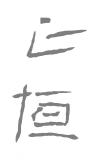 |
Long Sword (Tachi) | National Treasure
Inscription: Masatsune
Heian period, 12th century
|
|
 |
Long Sword (Tachi) | National Treasure
Inscription: Yoshifusa
Kamakura period, 13th century
 |
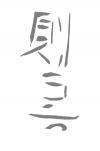 |
Long Sword (Tachi) | National Treasure
Inscription: Norifusa
Kamakura period, 13th century
|
|
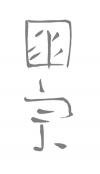 |
Long Sword (Tachi) | National Treasure
Inscription: Kunimune
Kamakura period, 13th century
 |
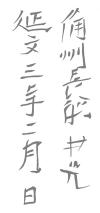 |
Long Sword (Tachi) | Important Cultural Property
Inscription: Bishū Osafune Kanemitsu / Enbun Sannen Nigatsuhi
Nanbokuchō period, Enbun 3 (1358)
 |
 |
Long Sword (Tachi) | Important Cultural Property
Inscription: Bizen no kuni jū Osafune Morikage
Nanbokuchō period (14th century)
 |
Long Sword (Katana) | Tokubetsu Jūyō Tōken
Attributed to Nagayoshi
Nanbokuchō period (14th century)
|
|
 |
Long Sword (Tachi) | National Treasure
Known as “Kōsetsu Samonji”
Inscription: Chikushū jū Sa
Nanbokuchō period (14th century)
|
|
|
Dagger (Tantō) | National Treasure
Known as “Juraku” (“Taikō Samonji”)
Inscription: Sa/Chikushū Jū
Nanbokuchō period (14th century)
